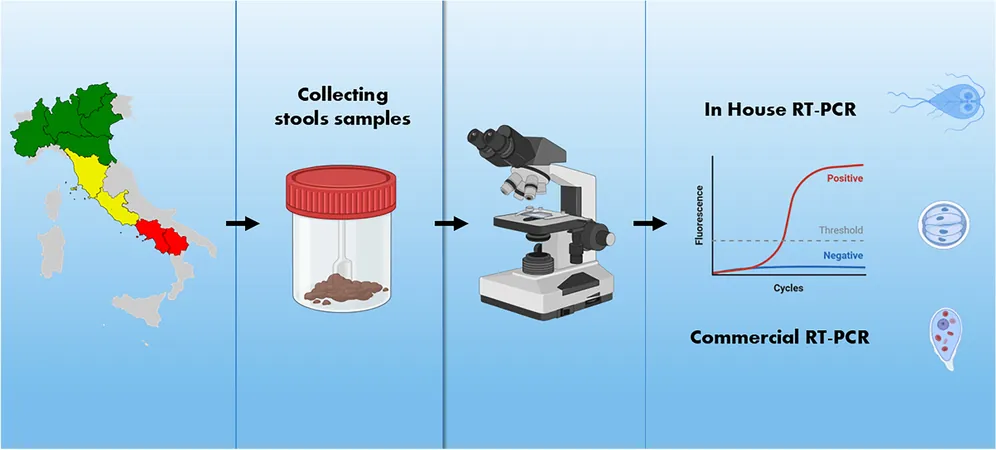
Ticks: The Hidden Culprits Behind Poxvirus Spread in Western China
2025-06-30
Author: Jia
Unseen Threat: Ticks as Disease Vectors
Ticks, those blood-sucking arthropods, are more than just a nuisance; they are vectors for a multitude of zoonotic diseases, transmitting bacteria and viruses that pose risks to both wildlife and human health. The spread and population growth of these tiny creatures have escalated due to climate change and shifts in land use, directly exacerbating the transmission of tick-borne diseases.
Poxviruses: A Growing Concern
Among the viral threats are poxviruses, a diverse group capable of infecting various animal species, including humans. With the rise of outbreaks such as the Orthopoxvirus monkeypox (MPV) pandemic in 2022 predominantly affecting the MSM community, public health officials are sounding alarm bells. The World Health Organization has twice declared mpox a Public Health Emergency, highlighting the urgent need for increased awareness and action.
The Urgent Need for Research in Western China
Regions in Western China—spanning Gansu, Shaanxi, and Tibet—feature a host of climate types and diverse ecosystems, making them hotspots for tick populations. These regions are also critical for studying the interaction of ticks with poxviruses, as they support various wildlife and livestock, increasing the risk of zoonotic spillovers. Farmers, often exposed to multiple pathogens, underscore the pressing need for monitoring these areas for emerging diseases.
Revealing Tick-Associated Poxviruses
Recent studies have begun to investigate the diversity and evolution of poxviruses in ticks in Western China. By collecting ticks from rural areas and analyzing their genetic material, researchers aim to uncover the intricate relationships between ticks, their hosts, and the viruses they carry. This research could provide crucial insights for preventative measures against potential outbreaks.
Harnessing Metagenomic Sequencing
Utilizing metagenomic sequencing, researchers meticulously gathered and analyzed ticks, identifying blood-feeding hosts and the poxviruses present. Significant variations in tick hosts and poxviral abundance have been observed, especially in unique ecological settings like Tibet, where the altitude and climate may affect viral dynamics.
The Evolving Nature of Viruses
The ability of poxviruses to adapt by capturing genes from their hosts raises the stakes further. This evolution could lead to more virulent strains capable of jumping species barriers, necessitating vigilance in monitoring wildlife and livestock interactions.
The Hidden Impact of Climate
Climate not only influences tick populations but also alters host interactions and pathogen dynamics. The harsh conditions in Tibet may enhance tick survival and encourage gene exchanges, potentially escalating poxvirus transmission rates. As ticks adapt to their environments, the implications for human health become clearer.
Urgent Call for Surveillance and Research
As findings suggest that ticks might act as mechanical vectors for poxviruses, there’s an urgent need for enhanced surveillance in Western China. Investigating the genetic material of these ticks can unveil their role in disease transmission and support public health initiatives aimed at mitigating future outbreaks.
Conclusion: A Growing Battle Against Emerging Viruses
Ticks are not merely pests; they are stealthy vectors in the spread of dangerous viruses. Understanding their roles in disease transmission is crucial for public health awareness and preparedness. As poxviruses evolve and adapt, so must our strategies to track and combat these evolving threats.




 Brasil (PT)
Brasil (PT)
 Canada (EN)
Canada (EN)
 Chile (ES)
Chile (ES)
 Česko (CS)
Česko (CS)
 대한민국 (KO)
대한민국 (KO)
 España (ES)
España (ES)
 France (FR)
France (FR)
 Hong Kong (EN)
Hong Kong (EN)
 Italia (IT)
Italia (IT)
 日本 (JA)
日本 (JA)
 Magyarország (HU)
Magyarország (HU)
 Norge (NO)
Norge (NO)
 Polska (PL)
Polska (PL)
 Schweiz (DE)
Schweiz (DE)
 Singapore (EN)
Singapore (EN)
 Sverige (SV)
Sverige (SV)
 Suomi (FI)
Suomi (FI)
 Türkiye (TR)
Türkiye (TR)
 الإمارات العربية المتحدة (AR)
الإمارات العربية المتحدة (AR)